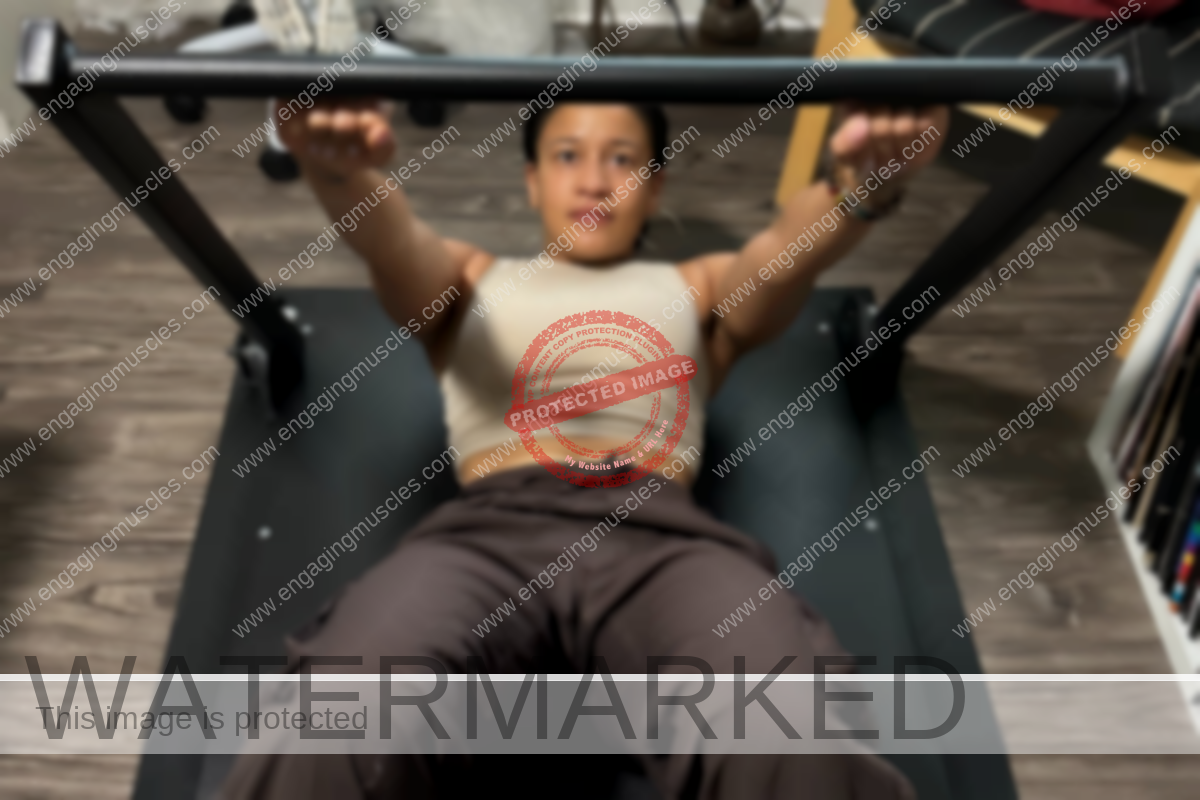The Journal of Physiotherapy published research showing curl-ups (aka crunches) increased abdominal strength in postpartum women with diastasis recti abdominis (DRA).
Seventy women were chosen for the study. To participate, the women had to be between six and twelve weeks postpartum and have diastasis recti abdominis (aka rectus diastasis).The women who participated in the study performed crunches at home for twelve weeks.
According to the study, the women increased their abdominal strength without worsening the abdominal separation (aka inter-recti distance).
If you’re new to having diastasis recti, for decades, physical therapists avoided crunches because they were told the abdominal separation would increase.Before there was evidence that crunches don’t increase the width of the separation in your abdominals, physical therapists recommended one-size-fits-all exercises to target the transverse abdominis (TVA) muscle.
The underlying problem with physical therapists attempting to emphasize your transverse abdominis is this: Before introducing the exercise, they didn’t know if your deepest abdominal muscle was neurologically capable of performing its role to the best of its ability.So, rather than increase strength that would allow you to function to the best of your ability, compensation (that’s cumulative) increased.
When the pre-existing compensation isn’t addressed before an abdominal exercise is introduced, the muscles that CAN perform their role to the best of their ability get stronger.
Meanwhile, without knowing it, the muscles that CAN”T play their role to the best of their ability aren’t stronger for having done the same amount of repetitions.
The inconvenient truth is this: When physical therapists don’t address pre-existing compensation before exercise is introduced, you DON’T function better than you were before the pain or injury (hint, hint).
I digress.
The Exercises Used In The Study
• Crunch
• Crunch with rotation
• Head lifts (aka flexion of the head and neck at the spinal joints)
The participants were lying on their backs for all of the exercises.
What Didn’t Improve
• Three sets of crunches had no impact on pelvic floor, abdominal, or lower back pain.
• There was no change in the severity of pelvic floor disorders.
• The abdominal separation in the fascial tissue (linea alba) stayed the same.
The Unknowns
• The postpartum women were not supervised. So, we have know way of knowing how well they performed each repetition.
• How many of the women had a Cesarian delivery?
• Were all of their abdominal muscles functioning to the best of their ability?
It only takes one Cesarian birth to have abdominal muscles that are underperforming. Meanwhile, Cesarian deliveries and surgical procedures for low back pain are at all-time highs.
If you’ve had a Cesarian delivery and you have low back or pelvic floor pain, this may be your first time reading that muscles can underperform. Unfortunately (and sadly), you aren’t alone.
If I had a dime for every time I’ve heard a client say, “Since I had child number (insert number), I’ve had pain.”
When you experience low back or pelvic floor pain, the neurological feedback between your brain and abdominal muscles isn’t allowing you to function to the best of your ability.
The Common ENEMY of Your Lower Back Postpartum: Underperforming Abdominal Muscles
Beyond your conscious awareness, your brain is hardwired to protect you from an injury.
Note to reader: There are thousands of isometric exercises to increase strength. By definition, an isometric exercise doesn’t involve motion at a joint. Instead of moving like you would when you do a crunch, for instance, you hold a position with an external force to oppose the muscles you want to emphasize. (See images below.) Because isometric exercises don’t require you to move, your brain has less opportunity to compensate.
jump to first image
What I Know (that the researchers don’t know)
• The experts at the Department of Sports Medicine at the Norwegian School of Sports Sciences in Norway failed to recognize that the spinal motion between the crunch’s starting position and the point at which the participants’ lower backs made contact with the floor was unresisted motion. It wasn’t until the end range of the motion that the participants had resistance on the muscles the researchers intended to target for the study.
Note to reader: If you suspect I’m skeptical of how much strength increased with crunches, trust your instincts. For the remainder of this post, I’ll explain why the strength gains were minimal (at best) and what you can do to increase strength with crunches.
To experience unresisted motion for yourself while seated, let your rib cage move closer to your pelvis. If you tried this, your trunk and spine flexed in the same direction gravity was pulling, and you ended up in a slumped posture. Because the movement of your trunk and spine wasn’t against gravity, there was no external force on your abdominal muscles, making the motion unresisted.
Similarly, when the women performed crunches lying on their backs, the air space between their lower backs and the floor made the motion unresisted. It wasn’t until their lower backs reached the end range of the motion that they had resistance on the abdominal muscles the study aimed to target.
The truth (according to physics): To strengthen muscles, you have to have an external force to oppose the muscles and the motion you intend to target.
Note to reader: I don’t recommend doing crunches on an exercise ball or a Bosu™ when you have a midline separation in your abdomen.
However, crunches on an exercise ball are more difficult than crunches performed on the floor.
If you’ve crunched on an exercise ball before having recti diastasis, the arch of your lumbar spine was up against the ball’s convex surface.
Unlike the standard crunches used in the study, as soon as you moved on an exercise ball, you had an external force to oppose the muscles you intended to target.To make crunches more productive, the experts could have filled the space between the participant’s lower back and the floor with a flat-on-one-side convex cushioned bolster. This way, like using an exercise ball, there’s an external force throughout the entire motion.

Note to reader: You can do the crunches shown above (and below) with a Smith Machine. If you do the crunches demonstrated in this post, be mindful of the direction you’re pushing into the bar relative to the direction the bar has to move to be free to move up or down.
When you perform a crunch this way, you avoid the compensatory motion that occurs with repetitive motion.
The harder you push into a fixed bar, the more force is applied to your abdominal muscles and the muscles that flex your shoulder girdle.
Note to reader: When licensed practitioners learn anatomy, they are taught that shoulder muscles (clavicle and scapula) are responsible for moving the shoulder girdle. That is a half-truth. Since the muscles responsible for moving the shoulder girdle attach to the ribs and the rib cage connects to the thoracic spine, those muscles are also spinal muscles.

Use this form to ask me a question about anything that pertains to this post.
Footnote
Journal of Physiotherapy, Volume 69, issue 3
Some of the links I have shared with you are affiliate links. I will receive a commission if you purchase using one of the links. The commission doesn’t cost you more than what you would pay for these items on Amazon (as an example). As an Amazon Associate, I earn from qualifying purchases. When you use any of these paid links, you’re supporting me. This helps me to keep putting out valuable content.
